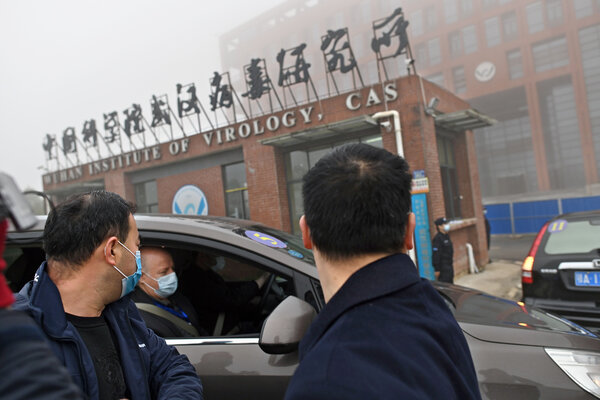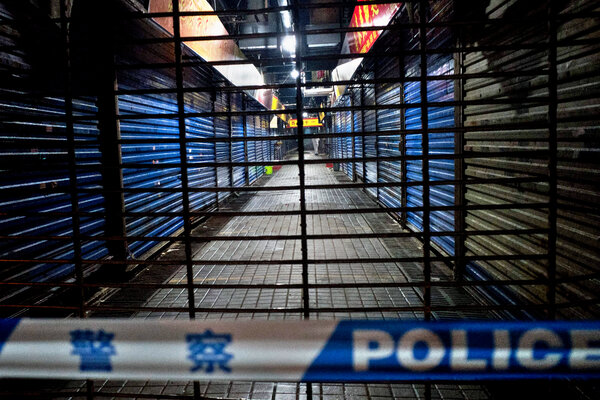You are using an out of date browser. It may not display this or other websites correctly.
You should upgrade or use an alternative browser.
You should upgrade or use an alternative browser.
Coronavirus News & Updates
- Thread starter Falcon29
- Start date
BJP minister who took India-made coronavirus vaccine contracts virus
An Indian health minister, who recently took the India-made coronavirus vaccine, has contracted the virus.
In a tweet, Haryana Health Minister Anil Vij said he tested positive for the coronavirus. "I am admitted in Civil Hospital Ambala Cantt. All those who have come in close contact to me are advised to get themselves tested for corona."
ccording to India media reports, Vij voluntarily took vaccine shot of Bharat Biotech's Covaxin less than two weeks ago.
"The 67-year-old BJP veteran is diabetic, and had recently undergone a surgery for a thigh bone fracture," said The Indian Express. "He had volunteered to participate in the vaccine’s human phase trials, in which over 25,000 persons were administered trial doses."
The Indian government-backed COVID-19 vaccine entered its last-stage trials last month.
Rajni Kant, a senior scientist at the government-run Indian Council of Medical Research (ICMR), told Reuters that the vaccine has shown good efficacy. “It is expected that by the beginning of next year, February or March, something would be available.”
An Indian health minister, who recently took the India-made coronavirus vaccine, has contracted the virus.
In a tweet, Haryana Health Minister Anil Vij said he tested positive for the coronavirus. "I am admitted in Civil Hospital Ambala Cantt. All those who have come in close contact to me are advised to get themselves tested for corona."
ccording to India media reports, Vij voluntarily took vaccine shot of Bharat Biotech's Covaxin less than two weeks ago.
"The 67-year-old BJP veteran is diabetic, and had recently undergone a surgery for a thigh bone fracture," said The Indian Express. "He had volunteered to participate in the vaccine’s human phase trials, in which over 25,000 persons were administered trial doses."
The Indian government-backed COVID-19 vaccine entered its last-stage trials last month.
Rajni Kant, a senior scientist at the government-run Indian Council of Medical Research (ICMR), told Reuters that the vaccine has shown good efficacy. “It is expected that by the beginning of next year, February or March, something would be available.”
space cadet
SENIOR MEMBER
Looks like the vaccine is shipping in the US this month
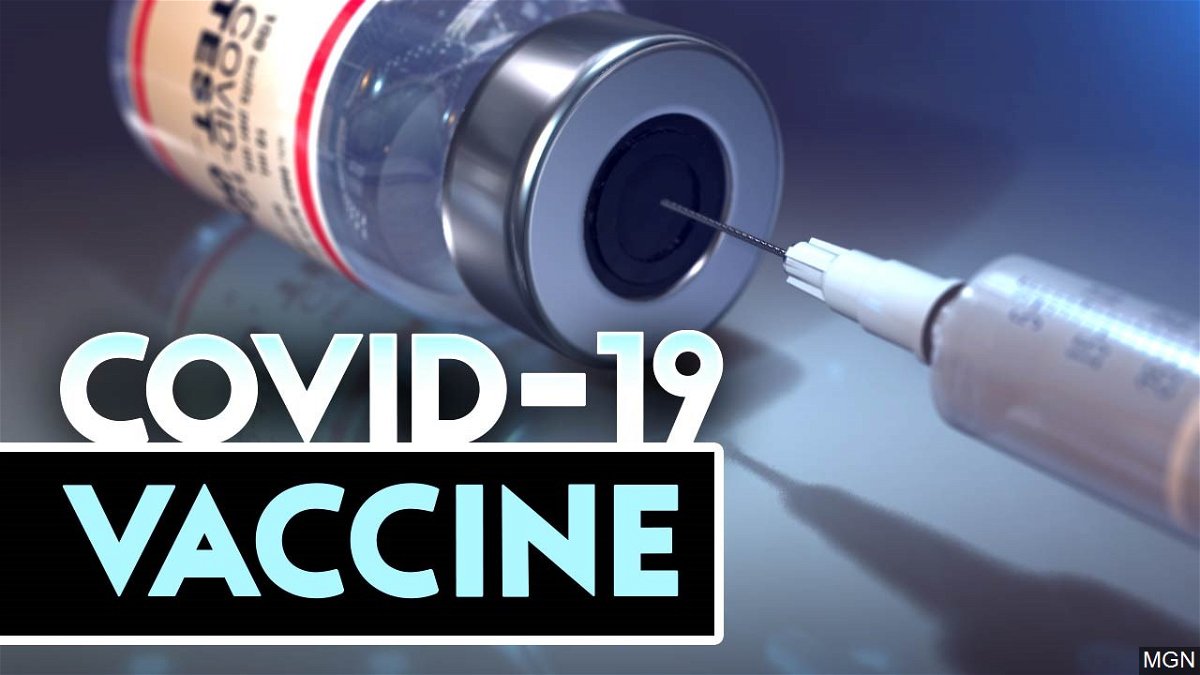
 kvia.com
kvia.com

El Paso hospitals to receive nearly 7,000 vaccine doses in state of Texas' initial distribution plan
EL PASO, Texas -- El Paso hospitals are expected to receive nearly 7,000 Covid-19 vaccines during the first distribution later this month, according to a Texas Department of State Health Services list released on Friday. Gov. Greg Abbott earlier this week said an initial vaccine shipment would...
India sets another daily COVID-19 case record; global numbers climb
April 24, 2021
By Danielle Haynes

Indian health workers attend to a suspected COVID-19-positive patient at a hospital in Kolkata, India, on Saturday.
Photo by Piyal Adhikary/EPA-EFE
April 24 (UPI) -- India reported a record number of new coronavirus cases for the third day in a row as the overall global daily caseload rose to unprecedented levels.
India reported 346,786 new cases -- the highest figure any country has recorded in a single day since the start of the COVID-19 pandemic -- and 2,624 deaths Friday. Cases have increased by 156% and deaths by 221% over the past two weeks, according to a New York Times analysis.
The country has reported 16.6 million cases and 189,544 deaths since the start of the pandemic.
India's daily caseload has skyrocketed past its previous high of about 97,000, set in September.
The country has struggled to keep up with oxygen demands as hospitalization rates increase, with hospitals and medical workers taking to social media to highlight their needs.
A variant of the virus first identified in India -- B.1.617 -- is spreading throughout the country, CNN reported. The Indian Health Ministry said the variant is more infectious.
The Swiss Federal Office of Public Health announced Saturday that it's detected its first case of the variant.
"The first case of the Indian variant of COVID-19 was found in Switzerland," the agency said on Twitter. "This is a passenger who entered through a transit airport. The consultation on the inclusion of India on the list of countries at risk is ongoing.
Switzerland reported 2,113 new cases and 11 deaths Friday, with 646,500 cases and 10,567 deaths since the start of the pandemic.
Iran has halted all flights to and from India and Pakistan as it handles its own spike in cases.
"Now we face a new threat that is the Indian virus, which is worse than the English, Brazilian and South African ones," Iranian President Hassan Rouhani said Saturday.
"If this virus also enters the country we will face a major problem."
Iran reported 22,900 cases and 380 deaths Friday, with a total of 2.38 million cases and 69,120 deaths since the start of the pandemic.
India's second wave of infections is fueling record daily cases worldwide. Johns Hopkins University's global tracker indicated there were more than 897,000 new cases reported Friday and 14,293 deaths.
Other than a reporting anomaly in December, Thursday represented the highest number of new COVID-19 cases in a single day -- 899,000.
Israel, meanwhile, reported no new deaths from COVID-19 for the first time in 10 months Thursday. The country's also leading the world in its vaccination rate, with about 120 doses administered per 100 people. The figure doesn't necessarily reflect the number of people fully vaccinated, as both the Pfizer and Moderna vaccines require two doses.
Israel's health ministry said about 53% of the population is fully vaccinated.
Israel reported 85 cases Friday and has had 837,892 cases and 6,346 deaths since the start of the pandemic.
April 24, 2021
By Danielle Haynes
Indian health workers attend to a suspected COVID-19-positive patient at a hospital in Kolkata, India, on Saturday.
Photo by Piyal Adhikary/EPA-EFE
April 24 (UPI) -- India reported a record number of new coronavirus cases for the third day in a row as the overall global daily caseload rose to unprecedented levels.
India reported 346,786 new cases -- the highest figure any country has recorded in a single day since the start of the COVID-19 pandemic -- and 2,624 deaths Friday. Cases have increased by 156% and deaths by 221% over the past two weeks, according to a New York Times analysis.
The country has reported 16.6 million cases and 189,544 deaths since the start of the pandemic.
India's daily caseload has skyrocketed past its previous high of about 97,000, set in September.
The country has struggled to keep up with oxygen demands as hospitalization rates increase, with hospitals and medical workers taking to social media to highlight their needs.
A variant of the virus first identified in India -- B.1.617 -- is spreading throughout the country, CNN reported. The Indian Health Ministry said the variant is more infectious.
The Swiss Federal Office of Public Health announced Saturday that it's detected its first case of the variant.
"The first case of the Indian variant of COVID-19 was found in Switzerland," the agency said on Twitter. "This is a passenger who entered through a transit airport. The consultation on the inclusion of India on the list of countries at risk is ongoing.
Switzerland reported 2,113 new cases and 11 deaths Friday, with 646,500 cases and 10,567 deaths since the start of the pandemic.
Iran has halted all flights to and from India and Pakistan as it handles its own spike in cases.
"Now we face a new threat that is the Indian virus, which is worse than the English, Brazilian and South African ones," Iranian President Hassan Rouhani said Saturday.
"If this virus also enters the country we will face a major problem."
Iran reported 22,900 cases and 380 deaths Friday, with a total of 2.38 million cases and 69,120 deaths since the start of the pandemic.
India's second wave of infections is fueling record daily cases worldwide. Johns Hopkins University's global tracker indicated there were more than 897,000 new cases reported Friday and 14,293 deaths.
Other than a reporting anomaly in December, Thursday represented the highest number of new COVID-19 cases in a single day -- 899,000.
Israel, meanwhile, reported no new deaths from COVID-19 for the first time in 10 months Thursday. The country's also leading the world in its vaccination rate, with about 120 doses administered per 100 people. The figure doesn't necessarily reflect the number of people fully vaccinated, as both the Pfizer and Moderna vaccines require two doses.
Israel's health ministry said about 53% of the population is fully vaccinated.
Israel reported 85 cases Friday and has had 837,892 cases and 6,346 deaths since the start of the pandemic.
space cadet
SENIOR MEMBER
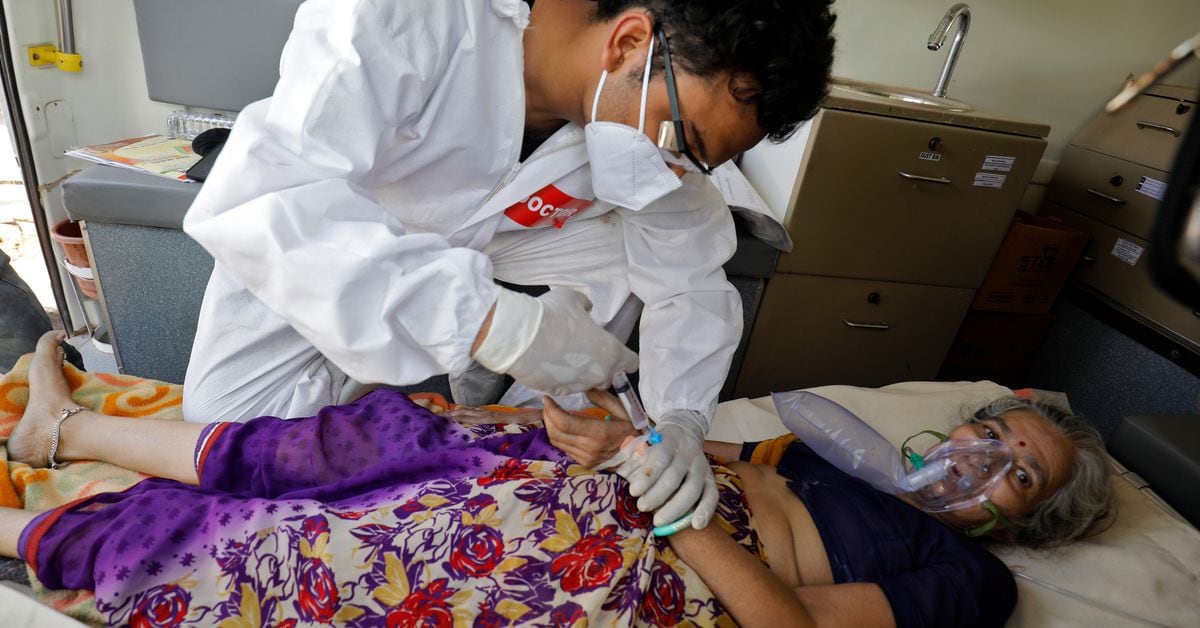
U.S. to provide vaccine components, medical supplies as India battles COVID-19 spike
The United States will immediately send raw materials for COVID-19 vaccines, medical equipment and protective gear to help India respond to a massive surge in coronavirus infections, U.S. President Joe Biden said on Sunday.
U.S. to provide vaccine components, medical supplies as India battles COVID-19 spike
The United States will immediately send raw materials for COVID-19 vaccines, medical equipment and protective gear to help India respond to a massive surge in coronavirus infections, U.S. President Joe Biden said on Sunday.
"Just as India sent assistance to the United States as our hospitals were strained early in the pandemic, we are determined to help India in its time of need," Biden said on Twitter after the White House announced a list of measures.
National Security Council spokeswoman Emily Horne said U.S. officials were "working around the clock" to deploy available resources and supplies to help India manufacture the Covishield vaccine and tend to the millions of Indians who are sick and dying. The United States will also send therapeutics, rapid diagnostic test kits and ventilators.
Washington was under mounting pressure to help India, the world's largest democracy, after Britain, France and Germany pledged aid over the weekend.
Indian Prime Minister Narendra Modi urged all citizens to be vaccinated and exercise caution, as the country set a global record for new COVID-19 infections in a single day. (Graphic on global case and deaths)
The United States was also pursuing options to provide India with oxygen generation and related supplies, Horne said.
U.S. Representative Ro Khanna, Democratic vice-chair of the Congressional India Caucus, welcomed the announcement but urged Biden to go further and give India the United States' unused COVID-19 vaccines doses from AstraZeneca Plc (AZN.L).
"Let's use the U.S. military and get as much oxygen and AstraZeneca doses to India as fast as we can," he said.
The top U.S. infectious disease official, Dr. Anthony Fauci, told ABC News on Sunday such a move was "something that certainly is going to be actively considered."
AstraZeneca’s vaccine is not yet approved in the United States, which has stockpiled millions of doses, and top U.S. health officials have said they have enough doses of approved versions by three other drugmakers to inoculate all Americans in coming weeks. The nation’s top business lobbying group has also pushed the administration to send AstraZeneca’s vials to countries grappling with rising cases.
The White House had no comment on the possibility of providing AstraZeneca doses to India.
Ashish Jha, dean of the Brown University School of Public Health, said the engagement of top Biden administration officials reflected a welcome "seriousness of purpose" in addressing the crisis in India, but details were lacking.
He said the messaging around any loan of AstraZeneca doses should be carefully prepared to avoid the impression that Washington would be offloading "something that it doesn't want."
Senior U.S. officials have expressed concern that new variants of the virus emerging in India could undermine progress made in the United States in fighting the pandemic.
The new wave of infections also threatens the economic recovery of India, the sixth-largest economy in the world.
Horne said the United States would send a team of experts to work with India from the Centers for Disease Control and Prevention and U.S. Agency for International Development.
In addition to the immediate aid, the U.S. Development Finance Corporation will fund a substantial expansion of manufacturing capability for Indian vaccine maker Biological E Ltd, or BioE, enabling the company to produce at least 1 billion doses of COVID-19 vaccines by the end of 2022.
In attempt to raise COVID pandemic to next level, Pakistan's ruling clergy is all set to open more border crossings with Iran.
As well, recently sudden influx of Indians in to Pakistan has been noticed, while non of the arriving Indian was tested for COVID at the time of entry into Pakistan... as a consequence Pakistan has seen rise in COVID infections.
I just wonder, if ruling clergy is bunch of idiots or puppies of Modi /Ajit Devil!
Why Pakistan media is not speaking out and exposing the evil, yet illegal ruling nexus?
I wonder, which regional country will be the next victim of evil states, who are directly responsible for openly spreading COVID virus across Pakistan.
As well, recently sudden influx of Indians in to Pakistan has been noticed, while non of the arriving Indian was tested for COVID at the time of entry into Pakistan... as a consequence Pakistan has seen rise in COVID infections.
I just wonder, if ruling clergy is bunch of idiots or puppies of Modi /Ajit Devil!
Why Pakistan media is not speaking out and exposing the evil, yet illegal ruling nexus?
I wonder, which regional country will be the next victim of evil states, who are directly responsible for openly spreading COVID virus across Pakistan.
space cadet
SENIOR MEMBER
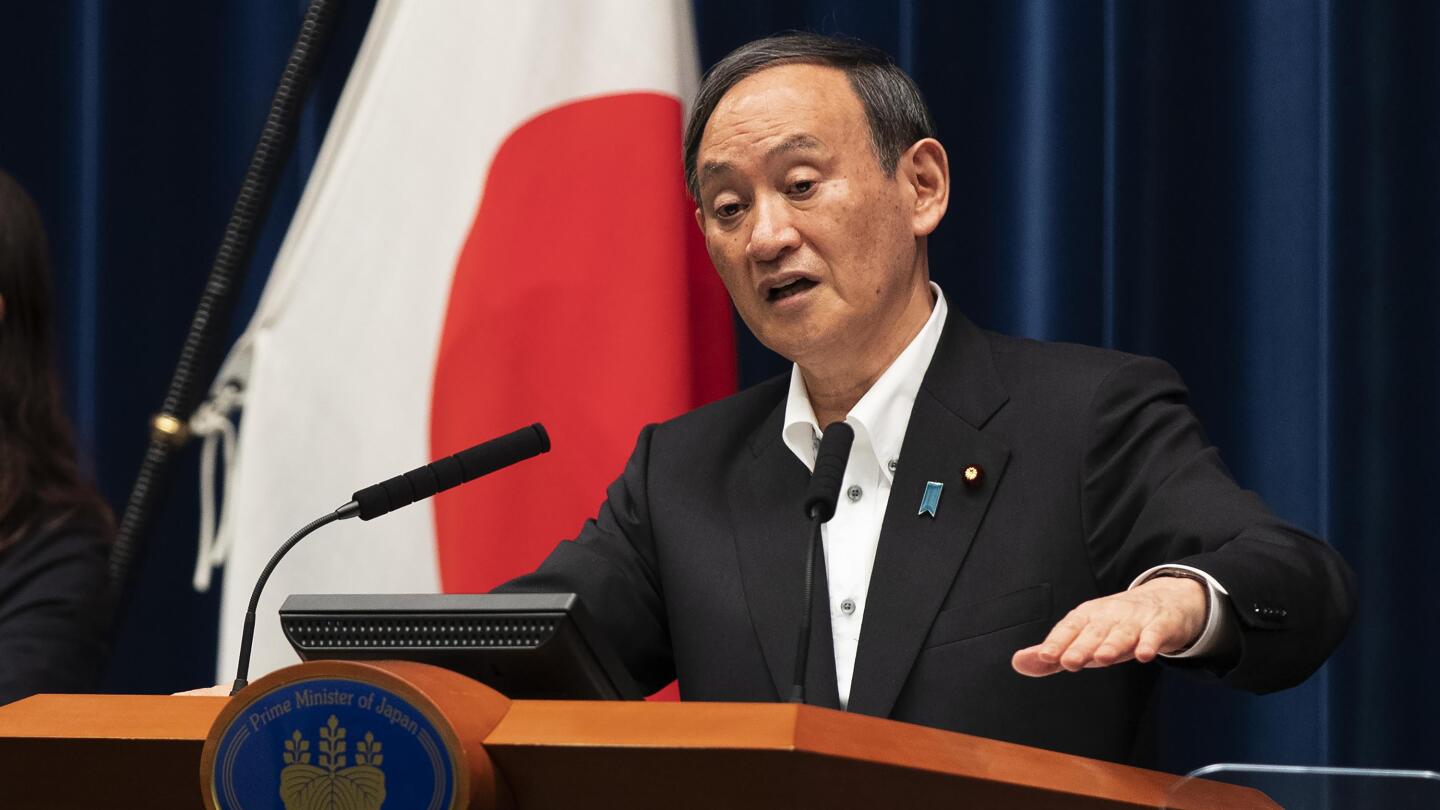
Packed trains, drinking: Japanese impatient over virus steps
Japan is showing social and political strains as the coronavirus spreads ahead of the Tokyo Olympics starting in 11 weeks.
Packed trains, drinking: Japanese impatient over virus steps
By MARI YAMAGUCHI2 hours agoTOKYO (AP) — Trains packed with commuters returning to work after a weeklong national holiday. Frustrated young people drinking in the streets because bars are closed. Protests planned over a possible visit by the Olympics chief.
As the coronavirus spreads in Japan ahead of the Tokyo Olympics starting in 11 weeks, one of the world’s least vaccinated nations is showing signs of strain, both societal and political.
The government — desperate to show a worried public it is in control of virus efforts even as it pushes a massive sporting event that a growing number of Japanese oppose hosting in a pandemic — on Friday announced a decision to expand and extend a state of emergency in Tokyo and other areas through May 31.
For Prime Minister Yoshihide Suga, the emergency declaration is both a health measure and a political tightrope walk as domestic criticism rises of Japan’s seeming determination to hold the Olympics, at any cost.
A speculated mid-May visit by International Olympic Committee President Thomas Bach has become “extremely difficult” because of the extension of the emergency, Olympic Minister Seiko Hashimoto admitted at a news conference Friday.
apan has avoided implementing a hard lockdown to curb infections, and past states of emergency have had little teeth, with people and businesses free to ignore the provisions. These measures have since been toughened, but they come as citizens show increased impatience and less desire to cooperate, making it possible that the emergency declaration will be less effective.
The current state of emergency in Tokyo and Osaka, Kyoto and Hyogo prefectures in the west was scheduled to end Tuesday. Suga said his government has decided to extend it in those areas and expand it to Aichi in central Japan and Fukuoka in the south.
On Friday, two days after “Golden Week” holiday makers returned to their daily routine, Tokyo logged 907 new cases of coronavirus infections, up sharply from 635 when the state of emergency began in the capital last month, but far above the target of 100 that some experts recommend.
Officials and experts say significantly fewer people may have been tested for the virus during the holiday, when many testing centers and hospitals were closed, and caution the numbers during and right after the holiday period may not reflect reality.
During the holidays, significantly more people than last year were seen at tourist spots in Kyoto and Nara despite stay-at-home requests. With drinking places closed, younger people carrying canned beer and snacks gathered in parks and streets in downtown Tokyo. When the holiday ended, many defied requests for remote work and returned to their offices on packed trains.
The extension deepens uncertainties over a speculated May 17 visit by International Olympics Committee President Thomas Bach, and whether Japan can safely host the Olympics postponed from last year and currently scheduled for July 23-Aug. 8.
Despite criticism for being slow to take virus measures, Suga has been reluctant to hurt the already pandemic-damaged economy and pledged to keep the state of emergency “short and intensive,” though experts said just over two weeks would be too short to effectively slow the infections.
The ongoing emergency is Japan’s third and came only a month after an earlier measure ended in the Tokyo area.
Less stringent, quasi-emergency measures will be expanded to eight prefectures from the current six, where bars and restaurants are required to close early.
Japan has had about 616,000 cases including about 10,500 deaths since the pandemic began.
Medical systems in hardest-hit Osaka have been under severe pressure from a COVID-19 outbreak there that is hampering ordinary health care, experts say. A number of patients died at home recently after their conditions worsened while waiting for vacancies at hospitals.
Past emergency measures authorized only non-mandatory requests. The government in February toughened a law on anti-virus measures to allow authorities to issue binding orders for nonessential businesses to shorten their hours or close, in exchange for compensation for those who comply and penalties for violators.
Shutdown requirements will be eased somewhat. Bars, karaoke studios and most other entertainment facilities will be required to remain closed until the end of May, but department stores will be able to operate for shorter hours and stadiums and concert halls will be allowed to have up to 5,000 people or half their capacity.
Wearing masks, staying home and other measures for the general public remain non-mandatory requests.
The government has also been criticized over its snail-paced vaccination rollout, which has fully covered less than 1% of the population since inoculations began in mid-February.
___
Associated Press writer Foster Klug contributed to this report.
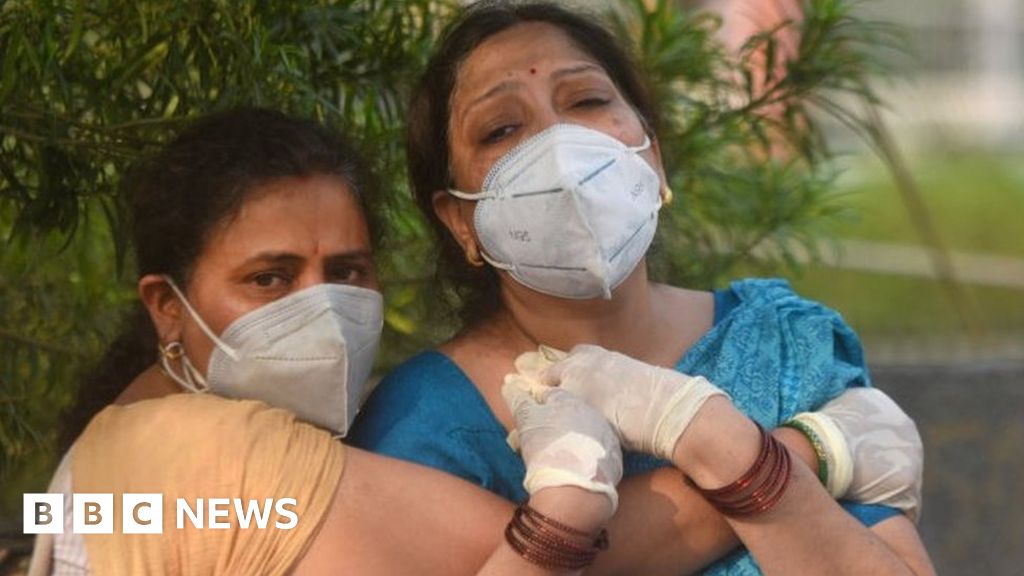
Coronavirus: How India descended into Covid-19 chaos
Experts tell the BBC that delays in decision-making worsened the crisis of India's second wave.
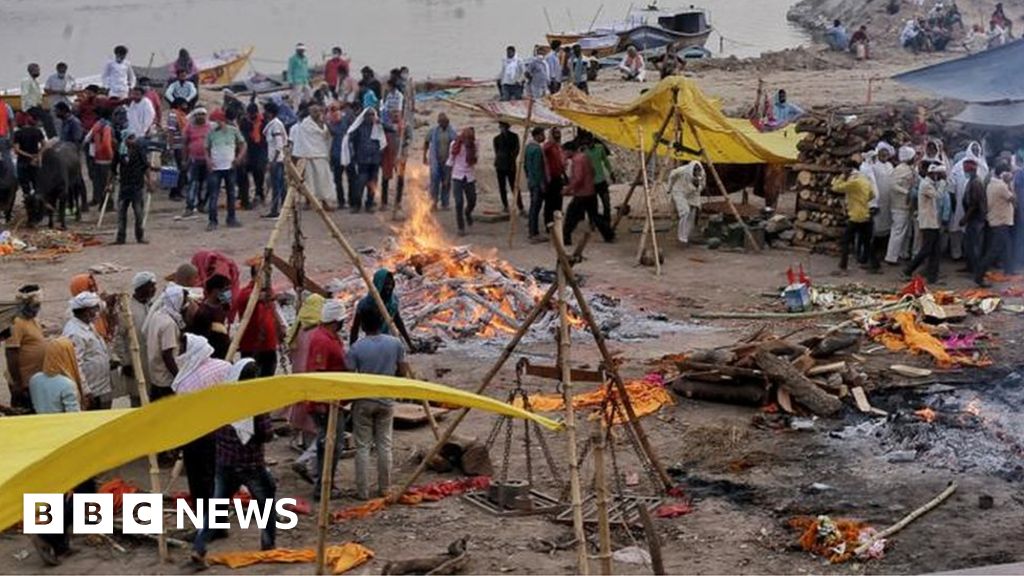
Covid in Varanasi: Anger rises as coronavirus rages in Modi's constituency
Many in Varanasi are asking where their MP - India's prime minister - is in their hour of need.
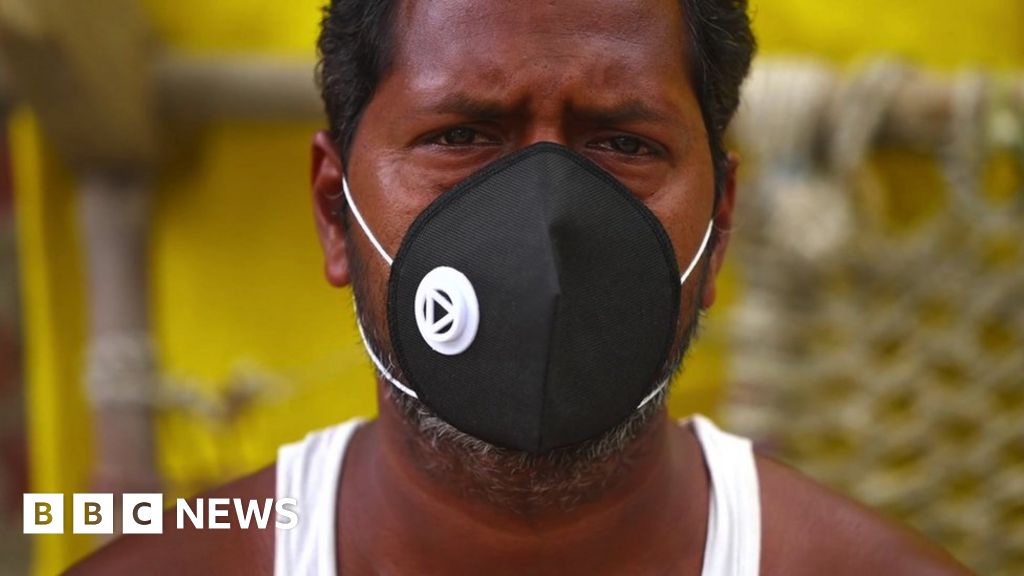
India's Covid crisis: Rural hospitals unable to cope as virus spreads
We uncover the conditions that patients face in health centres unequipped for a crisis like Covid.
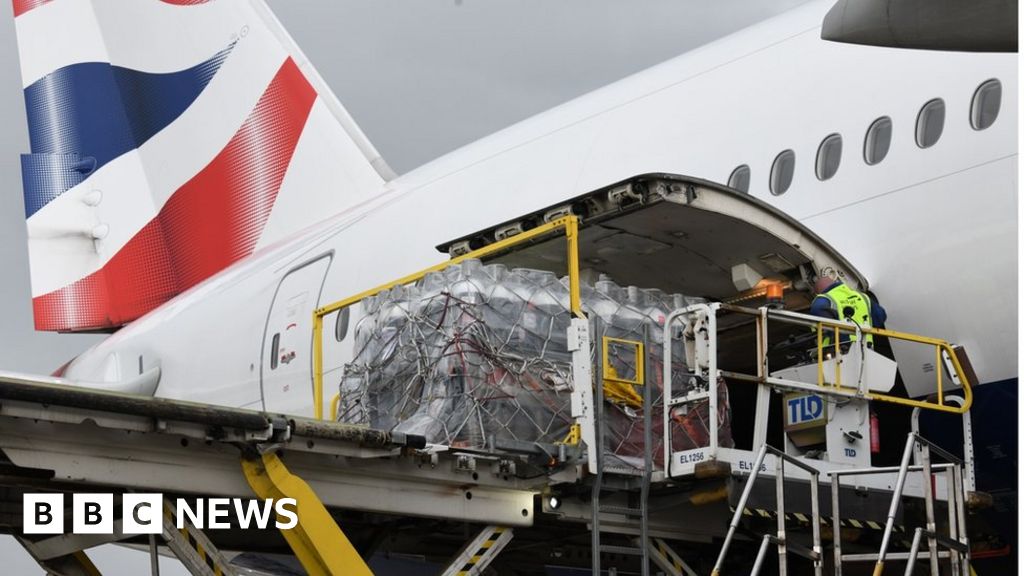
India Covid aid: Is emergency relief reaching those in need?
Emergency relief is flowing into India but concerns are mounting about delays in supply.
Covid-19: After black fungus, white fungus infection reported in India
May 20, 2021
Four cases of white fungal infection have been reported from Patna in Bihar, and one of the infected patients is a famous doctor from Patna, the reports said.
White fungus infection is more dangerous than black fungus because it affects lungs as well as other parts of the body, including nails, skin, stomach, kidney, brain, private parts and mouth, according to a report in the DNA.
Doctors say that white fungus also infect the lungs and an infection similar to Covid-19 is detected when a high-resolution CT scan is performed on the infected patient, DNA reported.
Doctors have issued a warning saying that unlike the black fungus, white fungus infection spreads more easily to vital organs, though there's little evidence as to what exactly makes this new infection more threatening.
A report in the Times of India said that as with black fungus infection, the risk of catching the new disease is the highest for those with frail immunity, suffering from pre-existing medical issues, including diabetes, and/or using steroids. Those put on high oxygen support are also at risk.
The report said a white fungus infection may be risky for pregnant women and children. Hence, proper emphasis should be laid on sanitisation since molds can be directly inhaled by a suspected patient.
May 20, 2021
White fungus affects lungs as well as other parts of the body, such as nails, skin, stomach, kidney, brain, etc.
Even as a black fungus endemic looms over the coronavirus-ravaged India, there's another threat which is baffling medical experts. According to Indian media reports, cases linked to white fungus infection, considered to be more dangerous than black fungus, have been traced in Bihar.Four cases of white fungal infection have been reported from Patna in Bihar, and one of the infected patients is a famous doctor from Patna, the reports said.
White fungus infection is more dangerous than black fungus because it affects lungs as well as other parts of the body, including nails, skin, stomach, kidney, brain, private parts and mouth, according to a report in the DNA.
Doctors say that white fungus also infect the lungs and an infection similar to Covid-19 is detected when a high-resolution CT scan is performed on the infected patient, DNA reported.
Doctors have issued a warning saying that unlike the black fungus, white fungus infection spreads more easily to vital organs, though there's little evidence as to what exactly makes this new infection more threatening.
A report in the Times of India said that as with black fungus infection, the risk of catching the new disease is the highest for those with frail immunity, suffering from pre-existing medical issues, including diabetes, and/or using steroids. Those put on high oxygen support are also at risk.
The report said a white fungus infection may be risky for pregnant women and children. Hence, proper emphasis should be laid on sanitisation since molds can be directly inhaled by a suspected patient.
space cadet
SENIOR MEMBER
WSJ News Exclusive | Intelligence on Sick Staff at Wuhan Lab Fuels Debate on Covid-19 Origin
Three researchers from the Wuhan Institute of Virology became sick enough in November 2019 that they sought hospital care, according to a U.S. intelligence report, fueling debate over Covid-19’s origin.
Intelligence on Sick Staff at Wuhan Lab Fuels Debate on Covid-19 Origin
Report says researchers went to hospital in November 2019, shortly before confirmed outbreak; adds to calls for probe of whether virus escaped lab
A World Health Organization-led team investigating the origins of the Covid-19 pandemic visited the Wuhan Institute of Virology on Feb. 3.
PHOTO: HECTOR RETAMAL/AGENCE FRANCE-PRESSE/GETTY IMAGESWASHINGTON—Three researchers from China’s Wuhan Institute of Virology became sick enough in November 2019 that they sought hospital care, according to a previously undisclosed U.S. intelligence report that could add weight to growing calls for a fuller probe of whether the Covid-19 virus may have escaped from the laboratory.
The details of the reporting go beyond a State Department fact sheet, issued during the final days of the Trump administration, which said that several researchers at the lab, a center for the study of coronaviruses and other pathogens, became sick in autumn 2019 “with symptoms consistent with both Covid-19 and common seasonal illness.”
The disclosure of the number of researchers, the timing of their illnesses and their hospital visits come on the eve of a meeting of the World Health Organization’s decision-making body, which is expected to discuss the next phase of an investigation into Covid-19’s origins.
Current and former officials familiar with the intelligence about the lab researchers expressed differing views about the strength of the supporting evidence for the assessment. One person said that it was provided by an international partner and was potentially significant but still in need of further investigation and additional corroboration.
Another person described the intelligence as stronger. “The information that we had coming from the various sources was of exquisite quality. It was very precise. What it didn’t tell you was exactly why they got sick,” he said, referring to the researchers.
November 2019 is roughly when many epidemiologists and virologists believe SARS-CoV-2, the virus behind the pandemic, first began circulating around the central Chinese city of Wuhan, where Beijing says that the first confirmed case was a man who fell ill on Dec. 8, 2019.
The Wuhan Institute hasn’t shared raw data, safety logs and lab records on its extensive work with coronaviruses in bats, which many consider the most likely source of the virus.
Shi Zhengli, the top bat coronavirus expert at the Wuhan Institute of Virology, has said Covid-19 didn’t leak from her laboratories. Dr. Shi shown in 2017.
PHOTO: JOHANNES EISELE/AGENCE FRANCE-PRESSE/GETTY IMAGESChina has repeatedly denied that the virus escaped from one of its labs. On Sunday, China’s foreign ministry cited a WHO-led team’s conclusion, after a visit to the Wuhan Institute of Virology, or WIV, in February, that a lab leak was extremely unlikely. “The U.S. continues to hype the lab leak theory,” the foreign ministry said in response to a request for comment by The Wall Street Journal. “Is it actually concerned about tracing the source or trying to divert attention?”
The Biden administration declined to comment on the intelligence but said that all technically credible theories on the origin of the pandemic should be investigated by the WHO and international experts.
“We continue to have serious questions about the earliest days of the Covid-19 pandemic, including its origins within the People’s Republic of China,” said a spokeswoman for the National Security Council.
“We’re not going to make pronouncements that prejudge an ongoing WHO study into the source of SARS-CoV-2,” the spokeswoman said. “As a matter of policy we never comment on intelligence issues.”
Beijing has also asserted that the virus could have originated outside China, including at a lab at the Fort Detrick military base in Maryland, and called for the WHO to investigate early Covid outbreaks in other countries.
Most scientists say they have seen nothing to corroborate the idea that the virus came from a U.S. military lab, and the White House has said there are no credible reasons to investigate it.
China’s National Health Commission and the WIV didn’t respond to requests for comment. Shi Zhengli, the top bat coronavirus expert at WIV, has said the virus didn’t leak from her laboratories. She told the WHO-led team that traveled to Wuhan earlier this year to investigate the origins of the virus that all staff had tested negative for Covid-19 antibodies and there had been no turnover of staff on the coronavirus team.
Marion Koopmans, a Dutch virologist on that team told NBC News in March that some WIV staff did fall sick in the autumn of 2019, but she attributed that to regular, seasonal sickness.
“There were occasional illnesses because that’s normal. There was nothing that stood out,” she said. “Maybe one or two. It’s certainly not a big, big thing.”
It isn’t unusual for people in China to go straight to the hospital when they fall sick, either because they get better care there or lack access to a general practitioner. Covid-19 and the flu, while very different illnesses, share some of the same symptoms, such as fever, aches and a cough. Still, it could be significant if members of the same team working with coronaviruses went to hospital with similar symptoms shortly before the pandemic was first identified.
David Asher, a former U.S. official who led a State Department task force on the origins of the virus for then-Secretary of State Mike Pompeo, told a Hudson Institute seminar in March that he doubted that the lab researchers became sick because of the ordinary flu.
“I’m very doubtful that three people in highly protected circumstances in a level three laboratory working on coronaviruses would all get sick with influenza that put them in the hospital or in severe conditions all in the same week, and it didn’t have anything to do with the coronavirus,” he said, adding that the researchers’ illness may represent “the first known cluster” of Covid-19 cases.
Long characterized by skeptics as a conspiracy theory, the hypothesis that the pandemic could have begun with a lab accident has attracted more interest from scientists who have complained about the lack of transparency by Chinese authorities or conclusive proof for the alternate hypothesis: that the virus was contracted by humans from a bat or other infected animal outside a lab.
Many proponents of the lab hypothesis say that a virus that was carried by an infected bat might have been brought to the lab so that researchers could work on potential vaccines—only to escape.
While the lab hypothesis is being taken more seriously, including by Biden administration officials, the debate is still colored by political tensions, including over how much evidence is needed to sustain the hypothesis.
A view of the Wuhan Institute of Virology.
PHOTO: NG HAN GUAN/ASSOCIATED PRESSThe State Department fact sheet issued during the Trump administration, which drew on classified intelligence, said that the “U.S. government has reason to believe that several researchers inside the WIV became sick in autumn 2019, before the first identified case of the outbreak, with symptoms consistent with both Covid-19 and seasonal illnesses.”
The Jan. 15 fact sheet added that this fact “raises questions about the credibility” of Dr. Shi and criticized Beijing for its “deceit and disinformation” while acknowledging that the U.S. government hasn’t determined exactly how the pandemic began.
The Biden administration hasn’t disputed any of the assertions in the fact sheet, which current and former officials say was vetted by U.S. intelligence agencies. The fact sheet also covered research activities at the WIV, its alleged cooperation on some projects with the Chinese military and accidents at other Chinese labs.
But one Biden administration official said that by highlighting data that pointed to the lab leak hypothesis, Trump administration officials had sought “to put spin on the ball.” Several U.S. officials described the intelligence as “circumstantial,” worthy of further exploration but not conclusive on its own.
Asked about the Jan. 15 statement, State Department spokesman Ned Price said: “A fact sheet issued by the previous administration on January 15 did not draw any conclusions regarding the origins of the coronavirus. Rather, it focused on the lack of transparency surrounding the origins.”
Though the first known case was Dec. 8, several analyses of the virus’s rate of mutation concluded that it likely began spreading several weeks earlier.
The WHO-led team that visited Wuhan concluded in a joint report with Chinese experts in March that the virus most likely spread from bats to humans via another animal, and that a laboratory leak was “extremely unlikely.”
However, team members said they didn’t view raw data or original lab, safety and other records. On the same day the report came out, WHO chief Tedros Adhanom Ghebreyesus said the team hadn’t adequately examined the lab leak hypothesis, and called for a fuller probe of the idea.
The U.S., European Union and several other governments have also called for a more transparent investigation of Covid-19’s origins, without explicitly demanding a lab probe. They have called in particular for better access to data and samples from potential early Covid-19 cases.
Members of the WHO-led team said Chinese counterparts had identified 92 potential Covid-19 cases among some 76,000 people who fell sick between October and early December 2019, but turned down requests to share raw data on the larger group. That data would help the WHO-led team understand why China sought to only test those 92 people for antibodies.
Team members also said they asked for access to a Wuhan blood bank to test samples from before December 2019 for antibodies. Chinese authorities declined at first, citing privacy concerns, then agreed, but have yet to provide that access, team members say.
space cadet
SENIOR MEMBER
The Wuhan Lab Leak Question: A Disused Chinese Mine Takes Center Stage
That Covid escaped from a lab isn’t the predominant hypothesis for the pandemic’s origins, yet prominent scientists are calling for a deeper probe and clearer answers from Beijing.
The Wuhan Lab Leak Question: A Disused Chinese Mine Takes Center Stage
It isn’t the predominant hypothesis for Covid’s origins, yet prominent scientists are calling for a deeper probe and clearer answers from Beijing
DANAOSHAN, China—On the outskirts of a village deep in the mountains of southwest China, a lone surveillance camera peers down toward a disused copper mine smothered in dense bamboo. As night approaches, bats swoop overhead.This is the subterranean home of the closest known virus on Earth to the one that causes Covid-19. It is also now a touchpoint for escalating calls for a more thorough probe into whether the pandemic could have stemmed from a Chinese laboratory.
In April 2012, six miners here fell sick with a mysterious illness after entering the mine to clear bat guano. Three of them died.
Chinese scientists from the Wuhan Institute of Virology were called in to investigate and, after taking samples from bats in the mine, identified several new coronaviruses.
Now, unanswered questions about the miners’ illness, the viruses found at the site and the research done with them have elevated into the mainstream an idea once dismissed as a conspiracy theory: that SARS-CoV-2, the virus that causes Covid-19, might have leaked from a lab in Wuhan, the city where the first cases were found in December 2019.
The lab researchers thus far haven’t provided full and prompt answers, and there have been discrepancies in some information they have released. That has led to demands by leading scientists for a deeper investigation into the Wuhan institute and whether the pandemic virus could have been in its labs and escaped.
Even some senior public-health officials who consider that possibility improbable now back the idea of a fuller probe. They say a World Health Organization-led team had insufficient access in Wuhan earlier this year to reach its conclusion that a lab leak was “extremely unlikely.”
Most of those calling for a fuller examination of the lab hypothesis say they aren’t backing it over the main alternative—that the virus spread from animals to humans outside a lab, in the kind of natural spillover that has become more frequent in recent decades. There isn’t yet enough evidence for either idea, they say, nor are the two incompatible. The virus could have been one of natural origin that was brought back to a laboratory in Wuhan—intentionally or accidentally—and escaped.
A growing number, however, including the director-general of the WHO and a prominent U.S. researcher who has worked with the Wuhan Institute of Virology, agree that the WIV needs to provide more information about its work to categorically rule out a lab spill.
The Wall Street Journal reported on Sunday that three WIV researchers became ill enough in November 2019 that they sought local hospital care, according to a previously undisclosed U.S. intelligence report, though officials expressed differing views over the strength of the evidence. White House spokeswoman Jen Psaki said Monday the information came from a foreign entity, and that the U.S. needed additional information to independently verify it. In January, the State Department had said that several WIV researchers became sick in autumn 2019 “with symptoms consistent with both COVID-19 and common seasonal illness.”
The Biden administration has recommended to the WHO that it lead a fuller investigation into the possibility of a lab leak, backing a call by WHO Director-General Tedros Adhanom Ghebreyesus, who has offered to deploy specialists. An investigation should include other laboratories in Wuhan, not just the WIV, and the team conducting it should include laboratory safety experts, according to a U.S. health official. “We should be able to look at biosafety records and interview staff members,” the official said.
The matter is likely to be discussed during a meeting of the WHO’s decision-making body, the World Health Assembly, which started Monday. Diplomatic support for a lab investigation is thin. Few governments are eager to champion a probe that China could easily veto.
Members of the WHO-China joint study team at a news conference in Wuhan, China, on Feb. 9.
PHOTO: CHENG MIN/XINHUA/ZUMA PRESSBeijing would be sure to resist any such effort and has tightly controlled access to information thus far. It denies that SARS-CoV-2 came from one of its labs or infected any WIV staff, and it wants the WHO to investigate whether the pandemic began outside Chinese borders.
“The U.S. keeps concocting inconsistent claims and clamoring to investigate labs in Wuhan,” China’s foreign ministry said in a written statement. “This fully shows that some people in the U.S. don’t care about facts and truth.” It cited the WHO-led team’s verdict on the implausibility of a lab leak and urged Washington to invite the WHO to investigate early U.S. cases.
China’s National Health Commission and the WIV didn’t respond to requests for comment.
Hidden mine
Chinese authorities have obstructed independent efforts to investigate the mine, setting up a checkpoint nearby where unidentified men stopped several foreign journalists in recent weeks, on one occasion warning there were wild elephants ahead.A Journal reporter reached the mine by mountain bike but was later detained and questioned for about five hours by police, who deleted a cellphone photograph of the mine. Villagers told the reporter that local officials had warned them not to discuss the mine with outsiders.
There was no sign of nearby villages being evacuated or any recent research activity at the mine. It was so overgrown that its entrance appeared to be inaccessible.
A growing number of virologists, biologists and other leading scientists are calling for a closer examination of the lab hypothesis.
Asked in a May 11 Senate hearing whether he thought the Covid-19 virus might have escaped from a Wuhan lab, Anthony Fauci, President Biden’s chief medical adviser, said, “That possibility certainly exists, and I am totally in favor of a full investigation of whether that could have happened.” Dr. Fauci is director of the National Institute of Allergy and Infectious Diseases, or NIAID, which has funded coronavirus research conducted with the WIV. He has said previously that the Covid-19 virus mostly likely evolved and jumped to humans in nature.
space cadet
SENIOR MEMBER
From the NYT daily briefing: Good morning. The lab-leak theory is everywhere. We have an explainer. |
|
Groupthink + polarization |
Suddenly, talk of the Wuhan lab-leak theory seems to be everywhere. |
President Biden yesterday called on U.S. intelligence officials to “redouble their efforts” to determine the origin of Covid-19 and figure out whether the virus that causes it accidentally leaked from a Chinese laboratory. Major publications and social media have recently been filled with discussion of the subject. |
Today, we offer an explainer. |
What are the basics? |
The origin of the virus remains unclear. Many scientists have long believed that the most likely explanation is that it jumped from an animal to a person, possibly at a food market in Wuhan, China, in late 2019. Animal-to human transmission — known as zoonotic spillover — is a common origin story for viruses, including Ebola and some bird flus. |
But some scientists have pointed to another possibility: that it escaped from the Wuhan Institute of Virology. As in other laboratories, researchers there sometimes modify viruses, to understand and treat them. |
“It is most likely that this is a virus that arose naturally, but we cannot exclude the possibility of some kind of a lab accident,” Dr. Francis Collins, the director of the National Institutes of Health, told senators yesterday. |
Why now? |
The subject is getting more attention because some scientists who were once skeptical of the laboratory theory have expressed new openness to it. |
Two weeks ago, 18 scientists wrote a letter to the journal Science calling for a new investigation and describing both the animal-to-human theory and the lab-leak theory as “viable.” And three scientists who last year dismissed the lab-leak explanation as a conspiracy theory have told The Wall Street Journal that they now consider it plausible. |
Among the reasons: Chinese officials have refused to allow an independent investigation into the lab and have failed to explain some inconsistencies in the animal-to-human hypothesis. Most of the first confirmed cases had no evident link to the food market. |
What changed? |
In some ways, not much has not changed. From the beginning, the virus’s origin has been unclear. All along, some scientists, politicians and journalists have argued that the lab-leak theory deserves consideration. |
Almost 15 months ago, two Chinese researchers wrote a paper concluding that the virus “probably originated from a laboratory in Wuhan.” Alina Chan, a molecular biologist affiliated with Harvard and M.I.T., made similar arguments. David Ignatius and Josh Rogin, both Washington Post columnists, wrote about the possibility more than a year ago. Joe Biden, then a presidential candidate, didn’t mention the lab-leak theory in early 2020 but he did argue that the U.S. should “not be taking China’s word” for how the outbreak started. |
But these voices were in the minority. The World Health Organization initially dismissed the lab-leak theory as implausible. |
|
Why all the dismissals? |
It appears to be a classic example of groupthink, exacerbated by partisan polarization. |
Global health officials seemed unwilling to confront Chinese officials, who insist the virus jumped from an animal to a person. |
In the U.S., one of the theory’s earliest advocates was Tom Cotton, the Republican senator from Arkansas who often criticizes China — and who has a history of promoting falsehoods (like election fraud that didn’t happen). In this case, though, Cotton was making an argument with plausible supporting evidence. |
The media’s coverage of his argument was flawed, Substack’s Matthew Yglesias has written. Some coverage exaggerated Cotton’s comments to suggest he was claiming that China had deliberately released the virus as a biological weapon. (Cotton called that “very unlikely.”) And some scientists and others also seem to have decided that if Cotton believed something — and Fox News and Donald Trump echoed it — the idea had to be wrong. |
The result, as Yglesias called it, was a bubble of fake consensus. Scientists who thought a lab leak was plausible, like Chan, received little attention. Scientists who thought the theory was wacky received widespread attention. It’s a good reminder: The world is a complicated place, where almost nobody is always right or always wrong. |
Why does it matter? |
The virus’s origin does not affect many parts of the fight against Covid. The best mitigation strategies — travel restrictions, testing, contact tracing, social distancing, ventilation and masking — are still the best mitigation strategies. |
But there are at least three concrete ways, in addition to the inherent value of truth, in which the origin matters. |
First, if the virus really did come from a lab, an immediate airing of the details might have led to even faster vaccine development and more effective treatments. Second, a leak that caused millions of deaths could lead to widespread change in laboratories’ safety precautions. Third, confirmation of a leak would affect the world’s view of China — and would put pressure on China to bear the burden of vaccinating the world as quickly as possible. |
So what’s the truth? |
We don’t know. Both animal-to-human transmission and the lab leak appear plausible. And the obfuscation by Chinese officials means we may never know the truth. |
For more: The Washington Post has published a helpful timeline. On Medium last week, the science writer Donald G. McNeil Jr. explained why he now finds the lab-leak theory plausible. And the sociologist Zeynep Tufekci has argued that the issue highlights some of the problem with the media’s approach to fact-checking. |
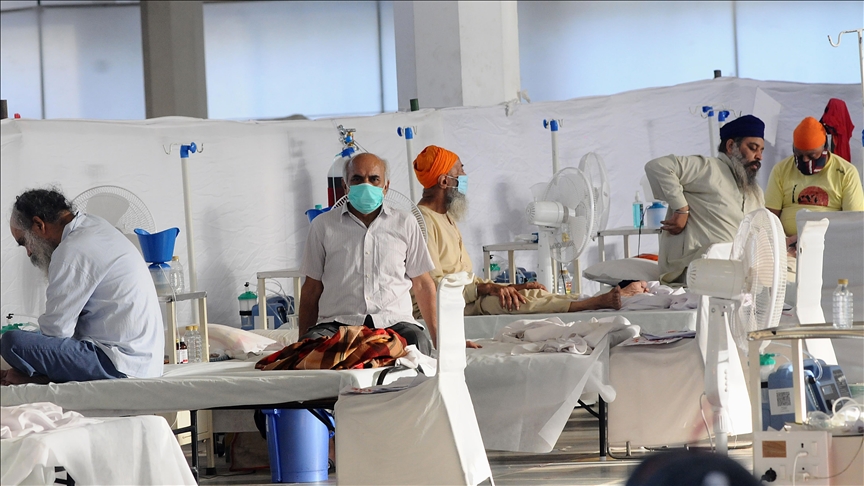
Indian double-mutant COVID-19 variant traced in Pakistan
Authorities have not disclosed patient's location, however Indian envoy's wife tested positive for coronavirus last week - Anadolu Ajansı

گھوٹکی میں فائرنگ سے ایک شخص جاں بحق اور خاتون زخمی
www.samaa.tv

